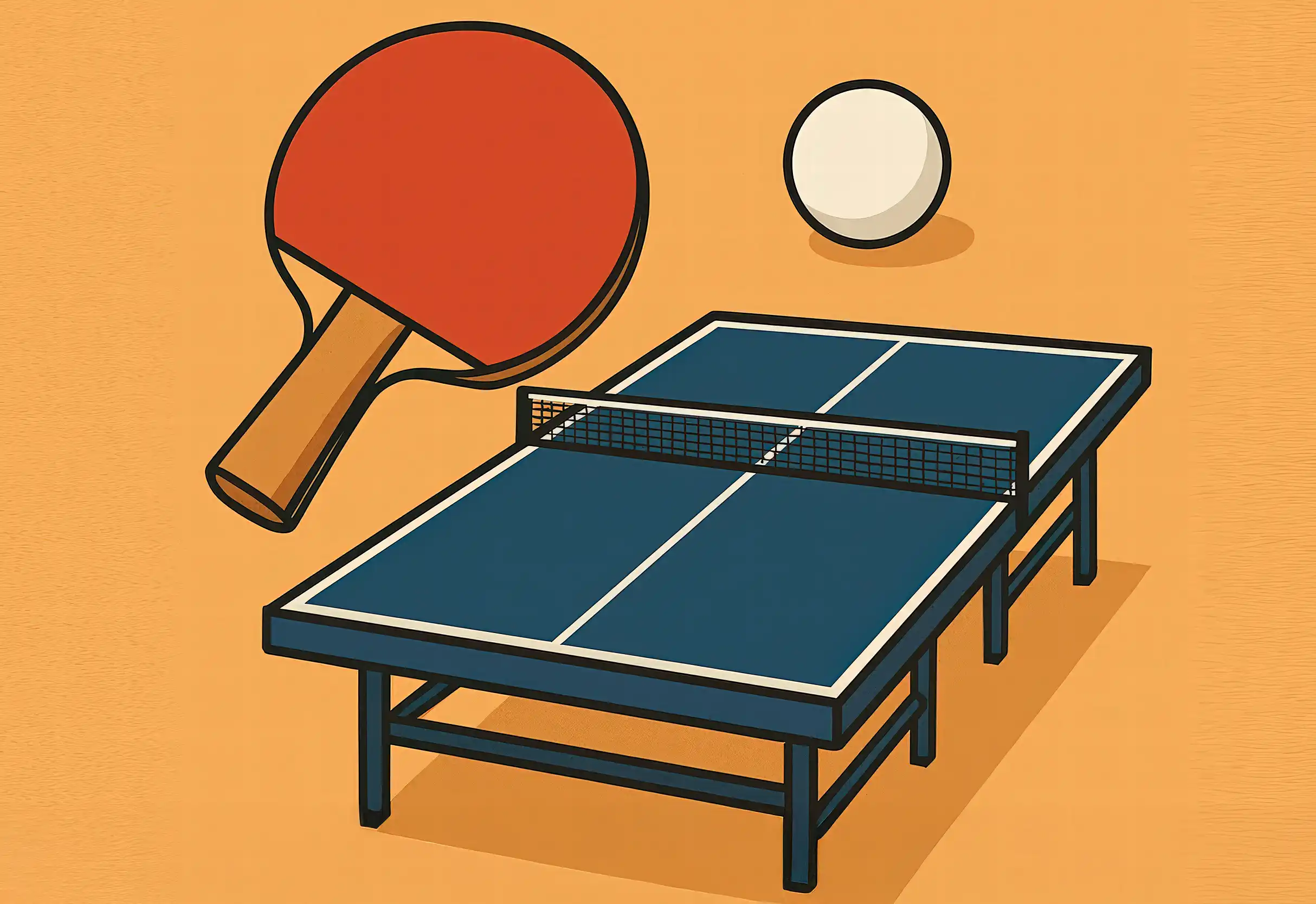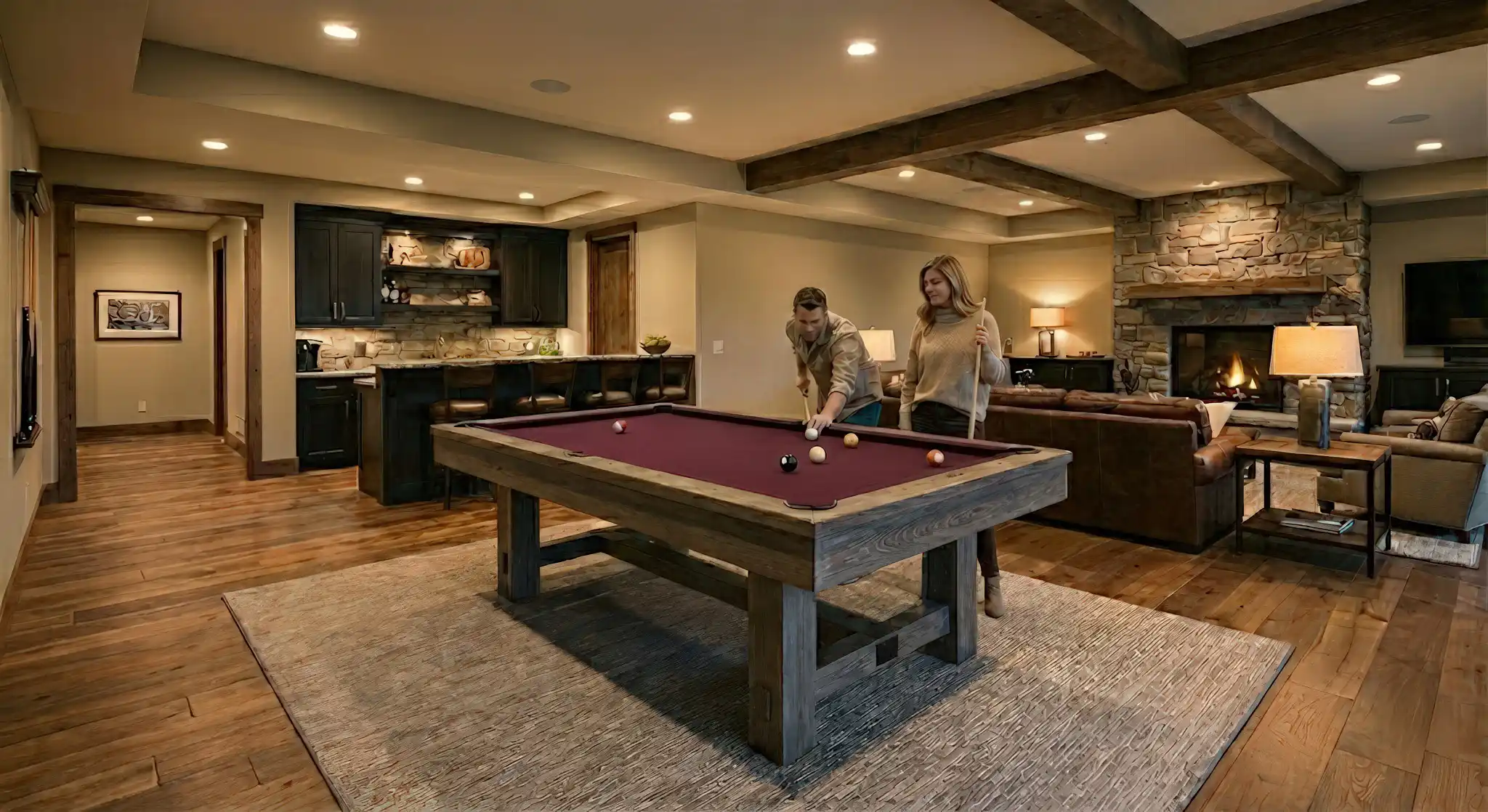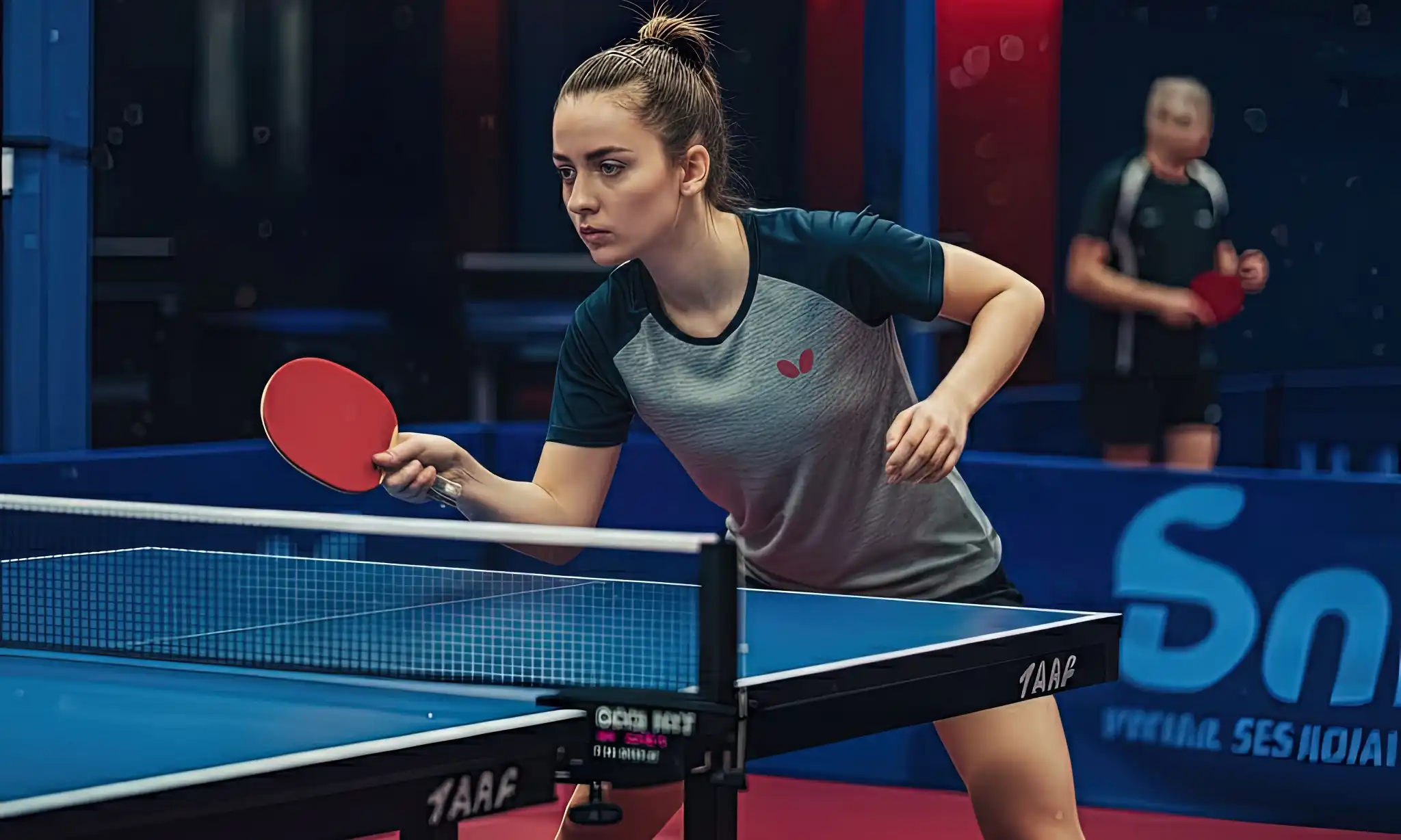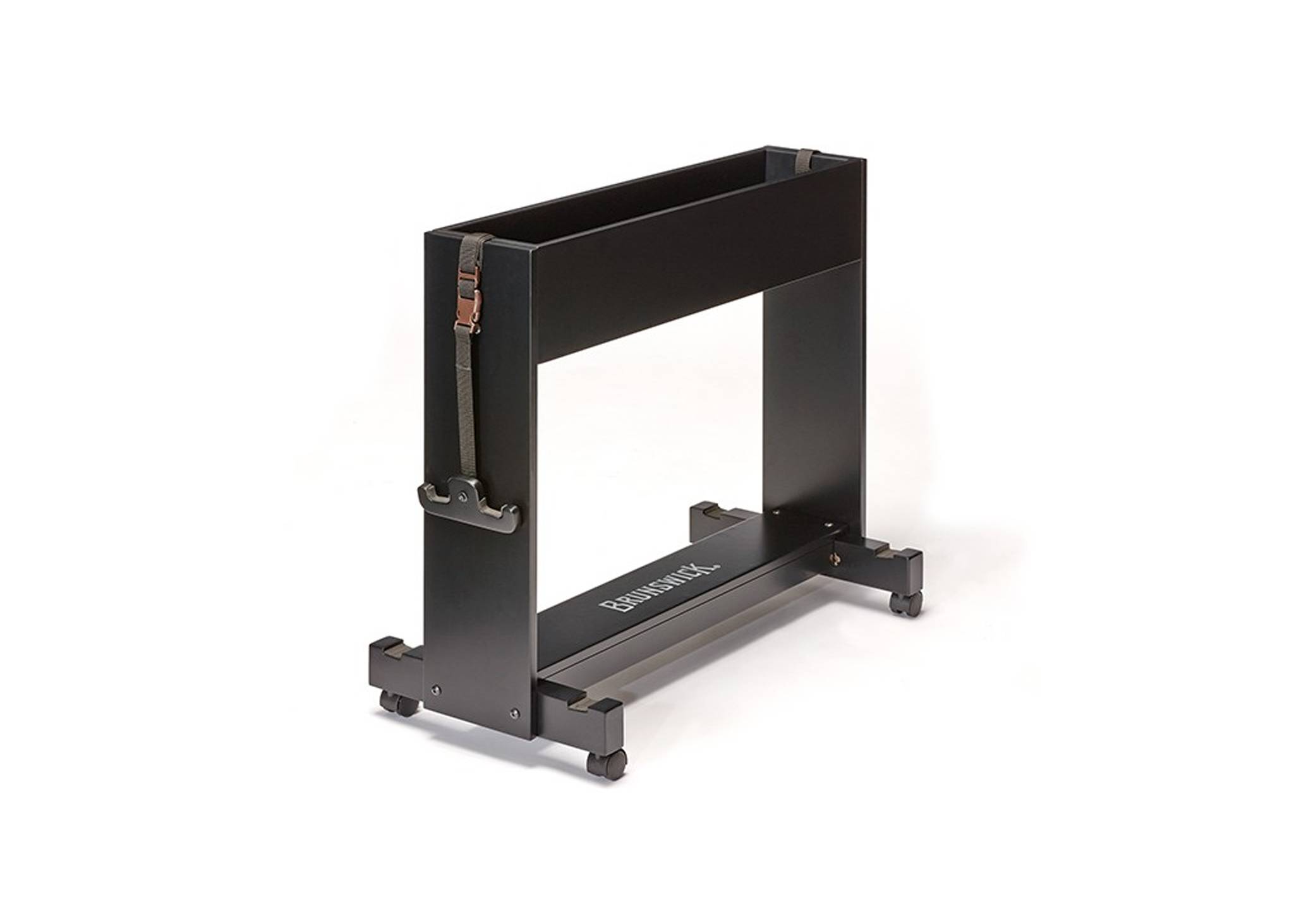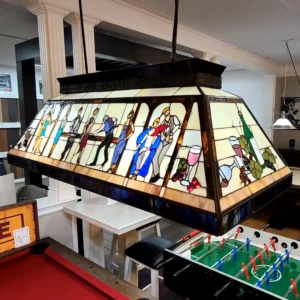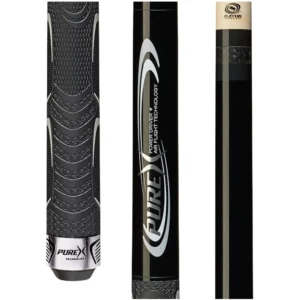Table tennis is a thrilling sport demanding speed, skill, and strategy. However, navigating the vast array of available equipment can feel overwhelming. Choosing the right gear is crucial, because it significantly impacts your performance, control, and overall enjoyment of the game. Therefore, this comprehensive Table Tennis Equipment Guide provides the essential knowledge to help players of all levels select the equipment that best suits their playing style and goals, ensuring you’re well-equipped for success on the table.
Introduction
The foundation of table tennis rests on three key components: the racket, the ball, and the table. Understanding the nuances of each element is the first step in choosing table tennis gear effectively. Unlike some sports, table tennis offers a high degree of customization, particularly with the racket, allowing players to fine-tune their equipment for specific performance characteristics. Consequently, this guide will delve into the details of table tennis blades, table tennis rubbers, balls, and tables, helping you make informed decisions.
Decoding the Table Tennis Racket: Blades and Rubbers
The table tennis racket (also called a paddle or bat) is your primary tool. It consists of a wooden blade covered with rubber on one or both sides. Importantly, the specific combination of blade and rubber dramatically influences how the racket performs.
Understanding Table Tennis Blades
The blade is the racket’s foundation, primarily responsible for feel, speed, and control.
- Composition:
Most blades use laminated wood plies (often 5 or 7). Additionally, many incorporate composite materials like carbon fiber, ALC, or ZLC to enhance speed, enlarge the sweet spot, or adjust the feel. Common woods include Limba (versatile), Ayous (soft, control), Koto (stiff, firm), and Hinoki (balanced stiffness/softness). Furthermore, the core ply (often Kiri or Ayous) significantly impacts the overall feel. - Weight & Thickness:
Blades range from light (under 82g) to heavy (90g+). Lighter blades generally offer maneuverability, while heavier ones provide more momentum. Thickness also affects stiffness; for instance, thinner blades (<6mm) usually offer more control and spin, while thicker blades (6mm+) provide more speed and power. The overall racket weight (blade + rubbers), ideally 180-185g, and balance are also crucial considerations. - Handle Types:
The handle impacts grip and comfort. For the common shakehand grip, options include Flared (most popular, secure), Straight (easier twiddling), and Anatomic (fits palm). Alternatively, for Table Tennis Grip Types like penhold, there are C-pen (Chinese, shorter/rounder) and J-pen (Japanese, squarish head) handles. Ultimately, choose the handle that feels most comfortable and secure.
Delving into Table Tennis Rubbers
The rubber surfaces dictate spin, speed, and control.
- Key Characteristics:
Spin, speed, control, thickness, and hardness define rubber performance. Thicker sponges generally mean more speed/spin but less control. Conversely, softer rubbers offer more dwell time (potentially more spin), while harder rubbers provide a faster rebound. - Surface Types:
- Inverted (Smooth): Most common, especially for offensive play. Offers maximum spin potential due to tacky surfaces and underlying sponge.
- Short Pips: Bumpy surface, prioritizes speed and direct hits over high spin. Good for close-to-table hitters and blockers.
- Long Pips: Elongated pimples, used defensively to reverse/manipulate spin and disrupt opponents.
- Anti-Spin: Smooth surface designed to neutralize incoming spin, effective for blocking.
- Color Rules: ITTF regulations require one side to be black and the other red (or blue, green, pink, purple). This rule helps opponents identify the rubber used mid-play.
Choosing the Right Table Tennis Balls
The table tennis ball itself influences play significantly.
- Types and Quality:
Balls use a star rating (1 to 3 stars). Specifically, 3-star balls are the highest quality, ensuring consistent roundness, bounce, and durability, making them standard for competitive play. In contrast, 1-star and 2-star balls are suitable for practice or recreation but may be less consistent. - Material Evolution:
Historically celluloid, official balls are now plastic (poly or ABS) for environmental reasons. These 40+ balls are slightly larger. Currently, ABS plastic balls are the standard, offering better durability and bounce consistency than early poly balls. - Impact on Performance:
Quality affects bounce consistency and feel. Higher-quality (3-star) balls provide a predictable bounce crucial for developing technique. Moreover, color (white or orange) should contrast with the table and environment for visibility.
Selecting Your Ideal Table Tennis Table
The table tennis table defines the playing area.
- Official Dimensions:
Standard tables are 9 ft long, 5 ft wide, and 2.5 ft high, with a 6-inch high net dividing the surface. The surface must be dark (usually blue or green), matt, with white boundary lines and a center line for doubles. - Material and Thickness:
Tabletops (often particleboard, MDF, or plywood) range from 12mm to 25mm thick. Thicker tables (20-25mm) generally offer a higher, more consistent bounce preferred for advanced play and faster pace. Thinner tables, on the other hand, are suitable for beginners or casual use. Thickness also impacts sturdiness. - Key Features:
Look for consistent bounce, stability, and potentially foldable designs or wheels for storage/portability if needed for home use. Additionally, outdoor tables require weather-resistant materials.
Matching Gear to Your Table Tennis Playing Style and Skill Level
Your Table Tennis Playing Style and experience level are key factors in choosing table tennis gear. Below, we explore recommendations based on common approaches:
Equipment Choices for Offensive Players
- Goal: Dominate with speed and spin.
- Blade: Faster types (OFF, OFF+), often with composite layers (e.g., carbon).
- Rubber: Smooth, spin-oriented rubbers with medium-to-thick sponges (2.0mm+) for maximum speed/spin.
Gear Recommendations for Defensive Strategists
- Goal: Absorb attacks, use spin manipulation.
- Blade: Slower, controlled types (ALL, DEF, DEF-), often with more wood plies for feel.
- Rubber: Often long pips on one side (spin reversal) paired with inverted on the other. Anti-spin is also used. Thinner sponges preferred for control.
Balanced Setups for All-Around Players
- Goal: Balance offense and defense, focus on consistency.
- Blade: All-around types (ALL, ALL+) offering compromise between speed and control.
- Rubber: Inverted rubbers with medium speed/spin ratings and medium sponge thickness.
Skill Level Recommendations
Furthermore, your skill level dictates appropriate starting points:
| Skill Level | Blade Type | Rubber Type | Sponge Thickness | Key Considerations |
|---|---|---|---|---|
| Beginner | All-Around | Inverted (Control/Spin Focus) | 1.5-2.0mm | Control, Feel, Comfort |
| Intermediate | OFF- / OFF | Inverted (Balanced Speed/Spin) | 2.0-2.1mm | Balance, Developing Attack |
| Advanced | OFF / OFF+ / DEF etc. | High Speed/Spin or Specialized | 2.1mm+ / Thinner | Optimization for Style/Power |
Exploring the Best Table Tennis Brands
Many reputable manufacturers produce high-quality gear. Therefore, familiarizing yourself with some of the best table tennis brands can help guide your selection:
- Butterfly: High-end, favored by pros (e.g., Tenergy/Dignics rubbers, Viscaria/Timo Boll blades).
- Stiga: Swedish brand with long history, quality blades (e.g., Clipper Wood, Allround Classic) and rubbers (e.g., DNA, Mantra).
- JOOLA: German brand popular recreationally and professionally (e.g., Dynaryz/Rhyzer rubbers, Rosskopf/Vyzaryz blades).
- DHS (Double Happiness): Premier Chinese brand, known for hard, tacky rubbers (e.g., Hurricane series) and powerful blades (e.g., Hurricane Long series).
- Tibhar: French brand trusted by pros (e.g., Evolution/Hybrid rubbers, Samsonov/Dynamic JC blades).
- Brunswick: A leader since 1845, Brunswick Billiards is renowned for quality and craftsmanship across game room equipment, including billiards, shuffleboard, air hockey, foosball, and table tennis. Notably, they offer specific table tennis table lines like the Smash series.
- Other Notables: Nittaku, Xiom, Yasaka, Donic, Andro all offer respected product lines, primarily focusing on blades and rubbers.
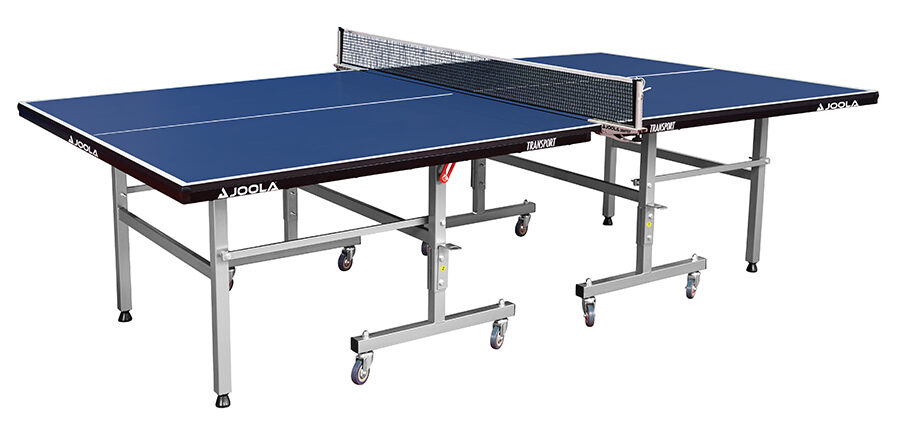
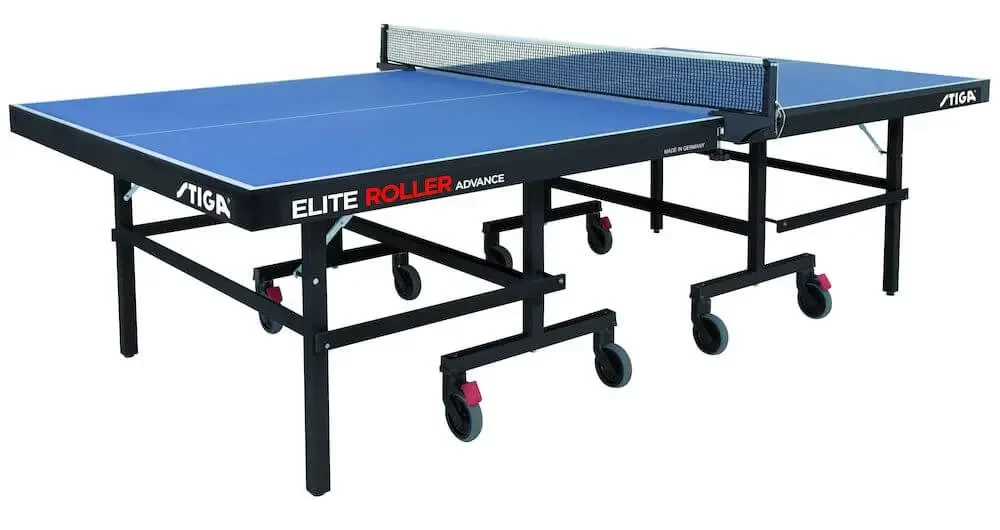
Brunswick Smash Series Tables
As mentioned, Brunswick offers quality table tennis tables catering to different needs:
- Smash 3.0: An entry-level option with a 16mm green MDF surface, sturdy foldable undercarriage with locking casters, and includes basic accessories (net, 2 paddles, 3 balls).
- Smash 5.0: A mid-range choice featuring an 18mm blue MDF surface, built-in accessory storage, durable fold-up design, and includes accessories and a lifetime warranty.
- Smash 7.0: A premium, versatile model with a 25mm black MDF deck suitable for indoor/outdoor use thanks to a 4mm aluminum-clad ABS surface. It boasts a rugged undercarriage, easy fold-up for playback or storage, premium accessories, and a 1-year warranty.
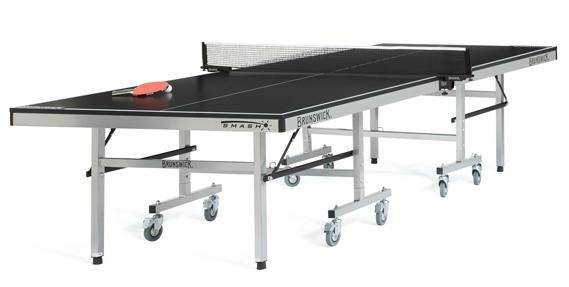
FAQ
What’s the main difference between wood and composite table tennis blades?
- Wood blades generally offer a softer feel and more control, often preferred by beginners or control-oriented players. In contrast, composite materials like carbon fiber are added to wood blades to increase speed, stiffness, and often enlarge the ‘sweet spot’ (the optimal hitting area), typically favored by more offensive players.
How does table tennis rubber thickness affect my game?
- Thicker sponge layers (e.g., 2.0mm and above) generally allow the ball to sink in more, creating a catapult effect that results in more speed and potential spin. However, this often comes at the cost of reduced control and feel. Thinner sponges, conversely, offer more direct feedback from the blade and better control, often preferred by beginners or defensive players.
Should beginners invest in expensive table tennis equipment right away?
- No, beginners should prioritize learning fundamentals with equipment focused on control and feel. For example, an all-around blade paired with control-oriented rubbers (1.5-2.0mm sponge) is usually recommended. Reasonably priced pre-assembled rackets or basic custom setups are sufficient initially. Therefore, focus on developing technique before investing heavily in advanced gear.
What are the health benefits of playing table tennis?
- Table tennis offers a range of health benefits, including improved cardiovascular fitness, enhanced hand-eye coordination, and increased mental alertness. It’s a low-impact sport suitable for all ages, promoting agility, balance, and social interaction, making it a fun way to stay active and healthy.
Conclusion
Selecting the right equipment is a crucial part of your table tennis journey. In summary, this Table Tennis Equipment Guide has outlined the key factors for choosing table tennis gear, from understanding table tennis blades and table tennis rubbers to considering table tennis balls, tables, and how they align with different Table Tennis Playing Styles and skill levels. Remember, the best equipment is what suits your game. So, consider your style, consult recommendations for your level, and don’t be afraid to experiment as you progress. Ultimately, making informed choices about your gear will enhance your control, power your shots, and increase your enjoyment of this fast-paced sport.
For expert advice on choosing the right table tennis gear for your game room, contact Hallmark Billiards today.

